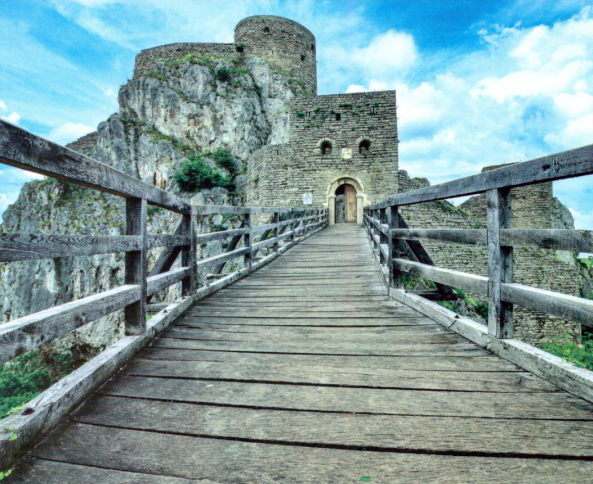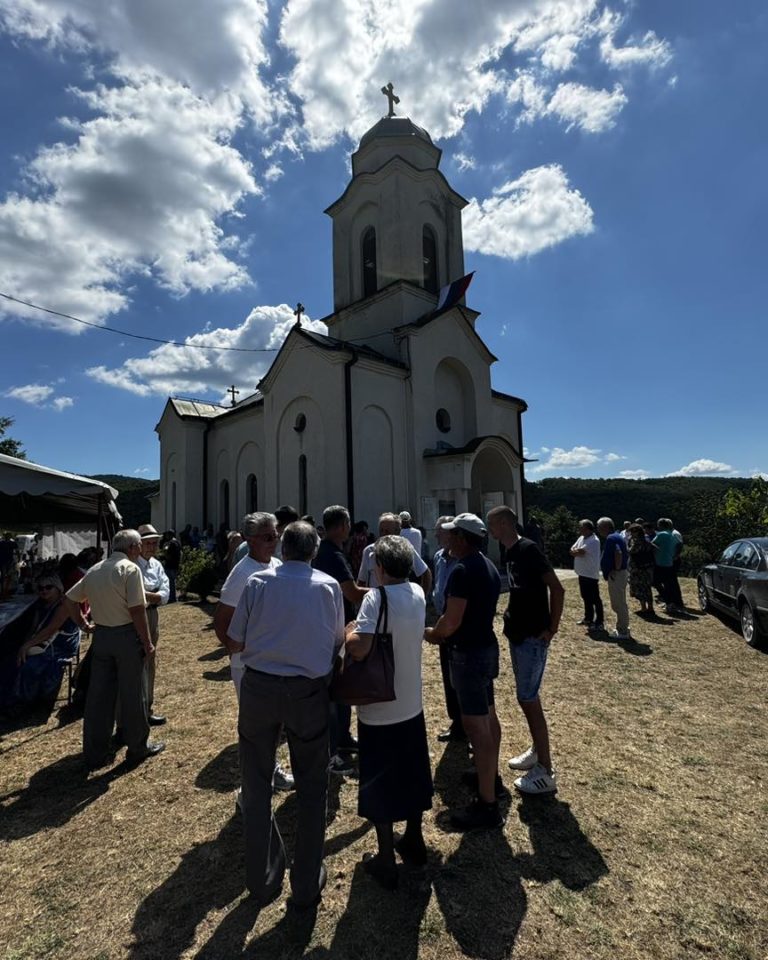
Srebrenik, a city in northeast Bosnia and Herzegovina, has many different attractions, including the medieval Srebrenik Fortress and Old Town, along with the Ćojluk Mosque, the Jasenica Orthodox Church, the Gornji Hrgovi ethno-village, the Suljagić House in Špionica, and the natural beauty of Mount Majevica.
Srebrenik and its fortress are believed to date back to the 14th century, a period that represents some of the most significant and best-preserved medieval fortifications in Bosnia and Herzegovina. The first written record of this structure dates back to 1333, when it is mentioned in historical sources as the residence of the Bosnian Ban Stjepan II Kotromanić, as well as the place where he signed a charter addressed to the people of Dubrovnik. The fortress, located on a high and difficult-to-access peak, is characterized by a unique architectural design adapted to the terrain. Its stone walls, guardhouses, and towers provided protection in turbulent times and continue to testify to the rich history of this area.
With improved infrastructure, increased investments, greater local community engagement, and strategic promotion, Srebrenik has the potential to become a major tourist center in the region and beyond, according to city officials.
Adnan Bijelić, mayor of Srebrenik, believes that for a comprehensive tourist experience, everything should be connected to the Old Town. This, as he states, has not been fully achieved due to a lack of supporting infrastructure such as accommodation facilities and restaurants.
“Additional facilities are needed – restaurants, ethno-villages, and picnic areas – in order to attract tourists and offer them a unique experience,” said the mayor.
He explained that the Srebrenik Tourist Board is taking pioneering steps, digitizing content and improving infrastructure on Majevica, a mountain that has major potential for ecotourism. Additionally, a center is being built to serve as the starting point for walking and cycling tours. However, he emphasizes that more investment is needed for this project, in order to mark the trails and provide electric bicycles and other facilities.
“We have to find a way to make Srebrenik stand out in the sea of other destinations. The proximity of the Tuzla airport and larger cities such as Tuzla and Brčko can be an advantage if we strategically design tourist packages. However, the construction of the Tuzla-Brčko highway would leave Srebrenik isolated, which is why we are looking for better connections that would allow easier access for tourists,” said Bijelić.
Architecture, Religion, and Traditions
Srebrenik’s religious and cultural buildings, which have a long historical tradition, can help the city stand out from other destinations. The mosque in the settlement of Ćojluk dates back to the Ottoman period and is one of the oldest in this area. Its simple architecture and authentic details reflect the Islamic architectural tradition of that time, and next to the mosque there is also a cemetery that testifies to the continuity of the life of the Muslim community in this area.
In the Srebrenik settlement of Jasenica, there is an Orthodox church, which stands as an important site of religious and cultural heritage for the local Orthodox community. Built in the 19th century, it has been preserved as a testimony of the enduring presence of Orthodox believers in this area. This church also served as the first elementary school in the area, operating during the administration of the Austro-Hungarian Monarchy in Bosnia and Herzegovina. According to popular tradition, the church was consecrated by Nikola Tesla’s uncle at its opening.

The Suljagić House, located in the Špionica settlement, is another rare example of well-preserved traditional Bosnian architecture in the area. With its distinctive wooden elements and spacious yard, the house reflects the way of life and the cultural-historical heritage of this region. Plans have been put forward for its preservation— and potentially its reconstruction—in order to include it in the tourist package.
Local Engagement
In addition to historical sights, Srebrenik also has a rich tradition of craftsmanship. Old trades such as pottery, blacksmithing, and weaving are still present in some parts of the city, and their promotion and preservation can further enrich the tourist experience.
Srebrenik’s cuisine is also a significant avenue for tourism development. Traditional Bosnian dishes like pita, bosanski lonac, and various baked goods are an indispensable part of every visitor’s experience. Homemade honey from the foot of Mt. Majevica, which is recognized for its high quality even beyond Srebrenik, is of particular importance.
The success of tourism initiatives cannot be achieved without local engagement. “We are working on a tourism development strategy, but the number of people involved in its creation is still small. Community participation has to be increased in order to create better plans that meet everyone’s needs,” said Bijelić.
To improve tourism in Srebrenik, a balance must be found between promotion and infrastructure development. “If we force promotion and don’t have adequate infrastructure, tourists will not be adequately accommodated and satisfied. If we wait for the infrastructure to develop without promotion, we will not have anyone to host in these capacities. So, we have to work on both aspects simultaneously in continued development,” Bijelić stressed.
Rich historical heritage, natural beauty, traditional crafts, and enticing cuisine underlie the potential for Srebrenik to become a recognizable tourist destination. However, this also requires strategic planning, investment, and active community involvement. By utilizing all its resources, this city can become an indispensable destination for history buffs, nature lovers, and sports enthusiasts.






